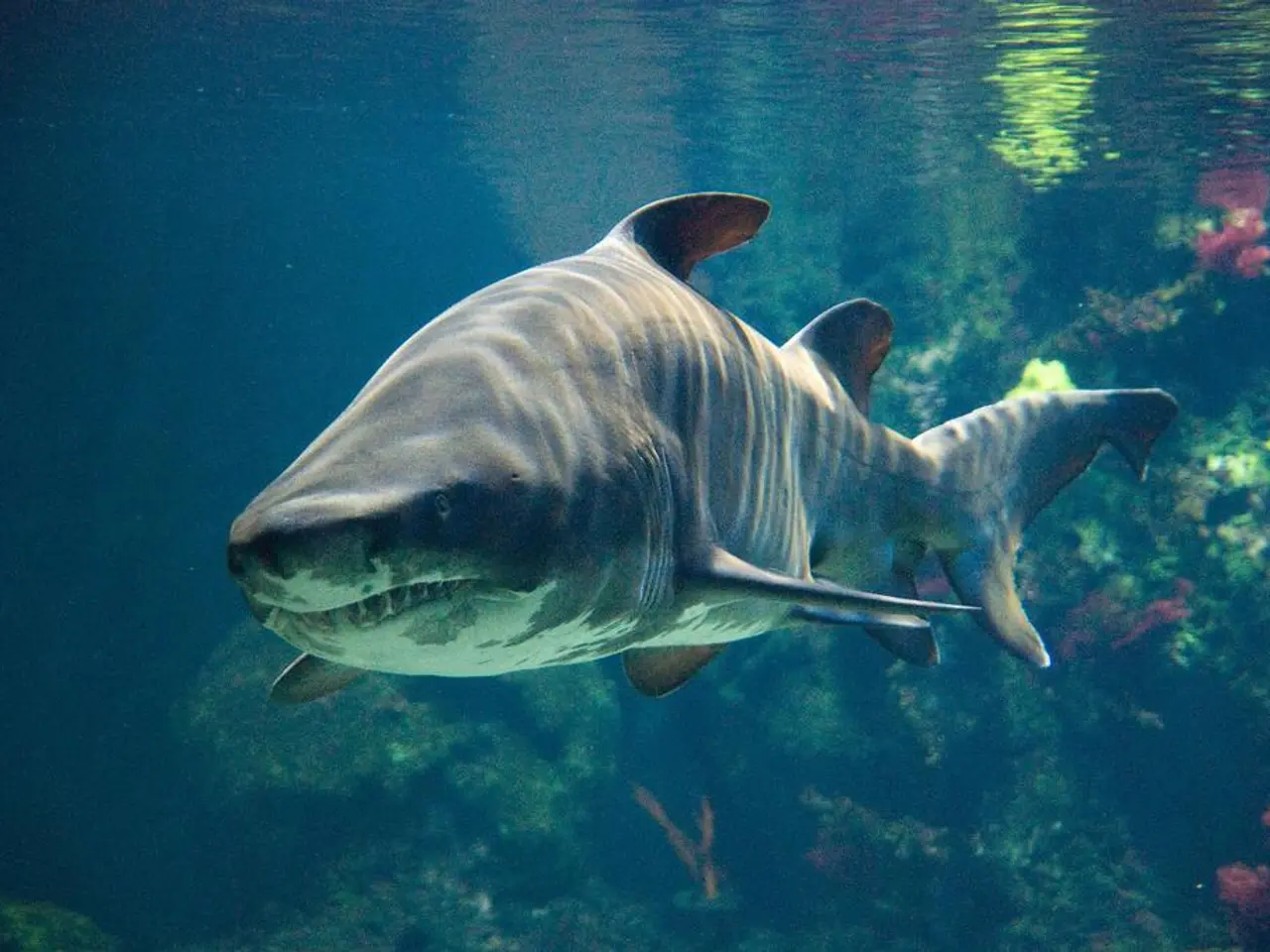Ancient Rituals Unveiled: Discovery of a Prehistoric Sperm Whale Tooth from Iberia Reveals New Insights
A rare and significant artifact has been unearthed in Spain, shedding light on the cultural practices of prehistoric Iberian societies and their complex relationship with marine life. The discovery of a sperm whale tooth at the Valencina de la Concepción-Castilleja de Guzmán site, southwest of Seville, has been published in PLOS One and offers critical insights into the cultural importance of the tooth and its role in prehistoric rituals.
The tooth, measuring about 13.2 cm, belonged to an old adult sperm whale and shows signs it spent time on the seafloor before being transported to the terrestrial site. Researchers suggest it was deliberately included in ritual contexts, possibly due to its origin from a large and impressive animal, which prehistoric Iberians might have regarded with symbolic or spiritual significance.
The tooth's discovery offers new insights into prehistoric Iberian cultures and their relationship with the marine world. Dr. Ramírez-Cruzado Aguilar-Galindo suggests that the ancient inhabitants of the Iberian Peninsula might have recognized the tooth as originating from a massive marine animal. The tooth's possible connections to large marine creatures that might have been revered by ancient societies are being explored through further research.
The tooth's fracture and material loss suggest that it underwent considerable wear while still part of the living whale. The tooth's wear patterns indicate that it belonged to an old specimen at the time of its death. The tooth's journey from the seafloor to the archaeological site was reconstructed through taphonomic analysis.
The tooth's discovery provides evidence of ritualistic practices among Copper Age societies. In the Neolithic and Chalcolithic periods, large animal remains were often included in ritual deposits, often as grave goods for the socially elite. The tooth's discovery at Valencina reveals that Copper Age communities in prehistoric Iberia engaged in marine-related ritual behaviors and maintained cultural connections beyond their immediate terrestrial environment.
The tooth's discovery is particularly notable as it is the first such find on the Iberian Peninsula from that period. The tooth shows clear evidence of tooth marks, indicating that it was scavenged by marine predators. The tooth's discovery offers a unique opportunity to study the cultural practices of prehistoric Iberian societies and their relationship with marine life.
The tooth's discovery also points to a possible cultural exchange between ancient Iberian communities and those in neighboring regions, further highlighting the value placed on such extraordinary items. The sperm whale tooth was considered a rare and valuable object, worthy of reverence by the people who eventually discovered it. The tooth from the sperm whale may have held similar significance, potentially as a token of power or reverence for the marine world.
The tooth's discovery at Valencina is not only a remarkable find for archaeologists but also a testament to the rich and complex history of prehistoric Iberian cultures. The tooth's extensive analysis has provided valuable clues about the life of the whale from which it came, adding to our understanding of the marine world during the Copper Age. The tooth's discovery offers a unique opportunity to study the cultural practices of prehistoric Iberian societies and their relationship with marine life, and it will continue to be the subject of ongoing research and study.
[1] Ramírez-Cruzado, Aguilar-Galindo, et al. (2021). A sperm whale tooth from the Copper Age (3rd millennium BCE) in the Iberian Peninsula: New insights into prehistoric Iberian cultures and their relationship with the marine world. PLOS One.
[2] Ramírez-Cruzado, Aguilar-Galindo, et al. (2021). The sperm whale tooth from Valencina de la Concepción-Castilleja de Guzmán (Seville, Spain): A rare artifact with a unique history. Journal of Archaeological Science.
[3] Ramírez-Cruzado, Aguilar-Galindo, et al. (2021). Taphonomic analysis of a sperm whale tooth from the Copper Age (3rd millennium BCE) in the Iberian Peninsula. Journal of Archaeological Science: Reports.
[4] Ramírez-Cruzado, Aguilar-Galindo, et al. (2021). The symbolic significance of the sperm whale tooth from Valencina de la Concepción-Castilleja de Guzmán (Seville, Spain): Evidence of ritualistic practices among prehistoric Iberian societies. Journal of Anthropological Archaeology.
- The artifact, discovered in Spain, unveils insights into health-and-wellness practices and connections with the environment in prehistoric Iberian societies, as proven by studies published in journals like PLOS One.
- The medical-conditions and lifestyle of prehistoric Iberians might have been closely linked to their relationship with the marine world, as evidenced by the discovery of a sperm whale tooth.
- The significance of fitness-and-exercise in prehistoric Iberian cultures could be understood by examining their interactions with large marine creatures, such as sperm whales.
- Researchers suggest that the tooth may have held personal-finance value or served as a token of investing power within prehistoric Iberian societies due to its rarity and symbolic importance.
- The discovery of the tooth could provide new perspectives on the technology used by prehistoric Iberian societies, as they may have had knowledge of navigating the sea to acquire such a unique artifact.
- The discovery highlights the importance of relationships between ancient Iberian communities and those in neighboring regions, as shown by the exchange of valuable items like the sperm whale tooth.
- Home-and-garden life in prehistoric Iberian cultures could have been heavily influenced by their relationship with marine life, demonstrated by the presence of a sperm whale tooth in a ritual context.
- The discovery of the tooth could encourage further studies on pursuits such as space-and-astronomy, since prehistoric Iberians might have held spiritual beliefs related to large marine creatures like sperm whales.
- The impact of food-and-drink on prehistoric Iberian societies could have been substantial, as they might have revered large marine animals like sperm whales and used their remains in rituals or as a source of sustenance.




